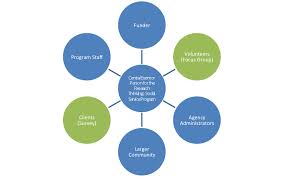Scheduling reflection events allows CRS and project staff to better plan for data use
and is a step toward the integration of data use and reflection with the M&E system
in the minds of staff. Each project should plan for reflection events; however, the
type of events and their frequency should be tailored to the project‘s needs.
Two topics should be included in the plan: project progress and M&E system
effectiveness. Within each topic, there should be multiple types of events included at
different frequencies and with different groups.
You may discuss these two topics together or separately; however, the effectiveness of
the M&E system does not need to be discussed as often as project progress. Instead,
discuss the effectiveness of the M&E system at key junctures, such as following an
evaluation, after a significant amount of monitoring data have been collected, or if
gaps in monitoring data have been identified while reviewing project progress.
Reflection events can be included as part of regular meetings or workshops.
However, if appropriate meetings or workshops are not scheduled at the time
necessary for reflection on the project or with the appropriate group of people,
schedule stand-alone events. These events can occur as often as monthly but should
definitely coincide with report deadlines (since a critical amount of data will
presumably have been collected and analyzed for these reports) or any opportunity
to reorient planned interventions (during the life of the project or ahead of new
funding cycles).
The frequency of reflection events will depend on the nature and timeline of the
project. Generally, reflection events should occur more often for shorter projects.
Short-term emergency projects, for example, may set aside time for reflection on
project progress during daily meetings while longer-term projects may hold quarterly
reflection events.
M&E systems include a plan for reflection events

